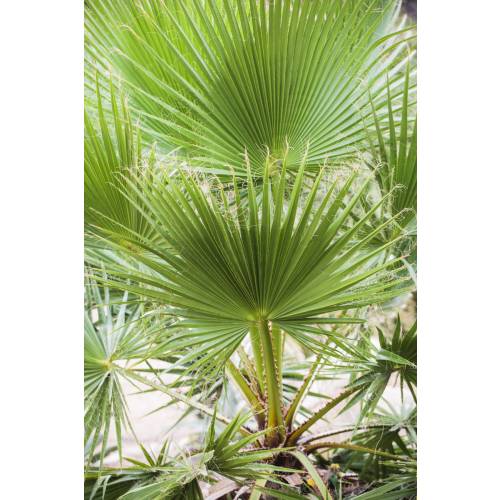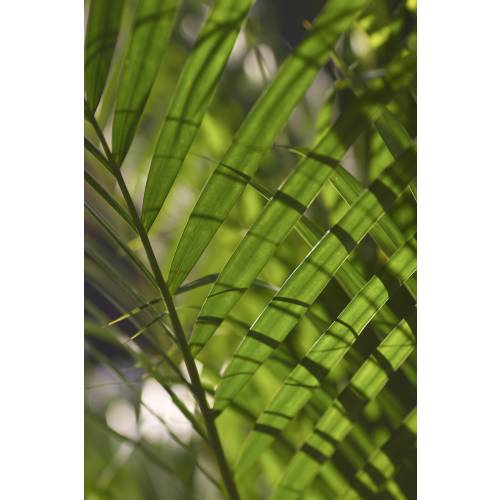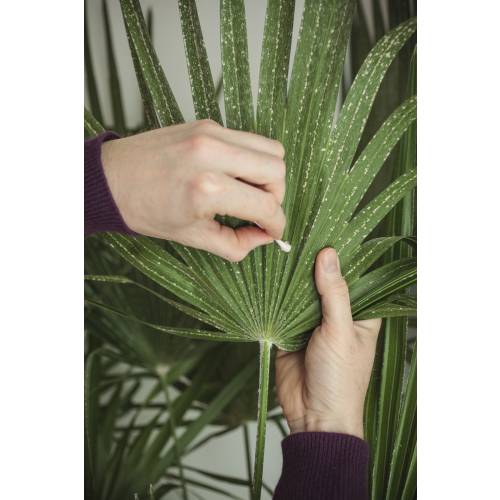
Cure
The indoors' palm
- Details
-
Tropical palm trees bring in lot more than just greenery! With their majestic leaves, it’s a breath of exoticism, easy to keep if light and warmth are sufficient.
Light-lovers
Most of the Palm trees require a minimum of sun to develop rightly. Four hours of strong light are necessary each day in order for them to develop fully, which means that they can only be grown in very bright areas, near window bays for example. However do not place them in direct sunrays: this can lead to a drying out of the palm leavess, especially at their tips, which is unsightly. If you lack of natural light, you can grow the Bamboo Palm (Chamaedorea). It thrives in rooms which do not have south facing windows. Dimmer, drier rooms do not harm it. It grows in tufts and when it thrives in its environment, it blossoms in small, yellow pompoms remisniscent of the Mimosa’s flowers.(False Acacia)
Make sure you do have the available space as when a Palm tree thrives, it can become very big! The Fishtail Palm (Caryota), so called because of its fish tail fin’s leaves, can reach 2m in as little as one year. As for the classic Dwarf Date Palm/Pygmy Date Palm (Phoenix roebelinii), it only grows one meter in ten years. The choice of the variety is therefore crucial
On the temperatures side, an indoor Palm tree ideally needs ambient temperatures of between 18 and 21°C. These plants withstand large differences of temperatures and are not sensitive to draughts.
Limited care
Palm trees do not require a lot of care, which explains their success indoors. The most regular care which must be done is watering, in small doses and with a water at room temperature. Palm trees loathe saucers filled with water. The earth ball must be always kept moist, but not soaking wet. Regular watering is therefore suitable. From time to time, cut the old, inaesthetic or withered palm leaves.
Which fertiliser?
Only give fertiliser during the growing period that is to say from the spring up to the beginning of autumn. Avoid giving fertiliser during the other periods of the year unless the plant is growing. Furthermore, never give fertiliser to a diseased Palm tree (A Palm tree undergoing a biting insects’ attack for example)
The mealybugs, their number 1 ennemy !
A watchful eye is also needed as Palm trees have a few more ennemies. In dry rooms, it is the ‘obscure mealybug’ which might infect it, affecting its growth and vigour. In case of attack, remove the bugs with a cotton soaked with alcohol. Also think about cleaning the palm leaves with a slightly humid sponge. Please note that giving too much fertiliser or not giving enough water lead to the plant being weaker and therefore put it more at risk of suffering from a mealybugs attack. - Photos (4)




